Planctoteuthis danae
Henk-Jan Hoving, Stephanie Bush, and Richard E. YoungIntroduction
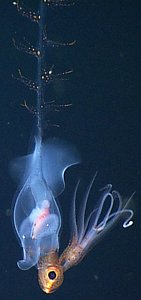
Figure. Side view of P. danae,
44 MM ML, at 1024 m depth. Note
the extreme tilt of the brachial
pillar. © 2013 MBARI.
Planctoteuthis danae is one of the more sturdy members of the genus, and it is most easily recognized by its relatively large, muscular fins.
Brief diagnosis:
A Planctoteuthis with- 12-13 suckers on proximal third of arm IV (distal two thirds bare).
- Fin length more than 50% of mantle length.
Characteristics
- Arms
- All arms weakly muscled (especially arms IV) relative to the well muscled tentacles.
- All arms with attenuate tips; arms I-III with many very small suckers on tips.
- Large females with arms II and III each with two greatly enlarged suckers (one of which is much larger than the other) in mid-arm.
- Mid-arm I suckers of ventral series much larger than those of dorsal series, but not nearly as large as enlarged suckers of arms II and III.
- Arms IV each with 12-13 suckers in proximal 1/3 of arm, aligning in virtually a single series; distal 2/3 of arm without suckers.
 Click on an image to view larger version & data in a new window
Click on an image to view larger version & data in a new window Click on an image to view larger version & data in a new window
Click on an image to view larger version & data in a new window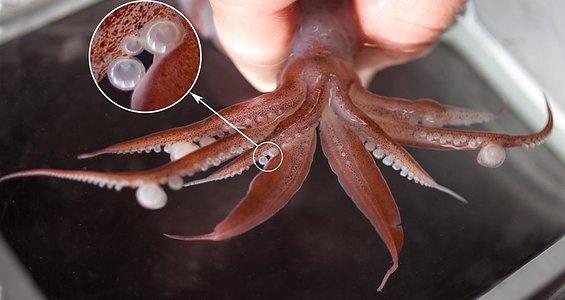
Figure. Anterodorsal view of a live, nearly mature female P. danae, 130 mm ML, showing arm crown. Insert shows enlargement of suckers of arm I. Note the larger size and larger teeth of the suckers of the ventral series. Photograph by Karen Osborn.
- All arms weakly muscled (especially arms IV) relative to the well muscled tentacles.
- Tentacular clubs
- Clubs bilaterally symmetrical and lack keels.
 Click on an image to view larger version & data in a new window
Click on an image to view larger version & data in a new window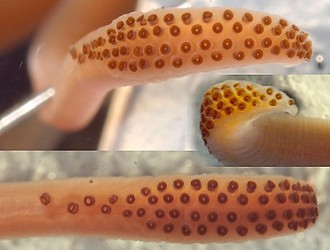
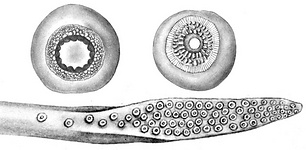
Figure. Oral views of the clubs and club suckers of P. danae. Left - Three views of the club, holotype, ca. 65 mm ML. Photographs by R. Young. Right - View of the club and basal club sucker (left) and mid-club sucker, 47 mm ML, showing differences in aperature width. Note that this difference is apparent in the lower photograph at left. Drawings from Roper and Young (1967).
- Head
- Beaks: Descriptions can be found here: Lower beak; upper beak.
- Beaks: Descriptions can be found here: Lower beak; upper beak.
- Funnel
- Posteriorly located antitragus of funnel locking-apparatus with two distinct lobes.
- Fins
- Fin length 52% of ML.
Comments
More details of the description of P. danae can be found here.
Nomenclature
This species was originally placed in the genus Valbyteuthis Joubin, 1931, which was subsequently synonomized with Planctoteuthis (Young, 1991).
Life history
Paralarvae/juveniles:
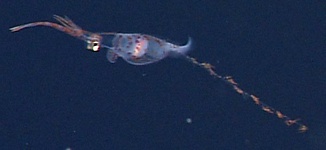
Figure. Side view of a very young P. danae, 20 mm ML.
In situ ROV photograph taken at a depth of 829 m.
Note long neck and eyes strongly protruding ventrally.
© 2013 MBARI.
Paralarvae of P. danae are most easily distinguished from other doratopsis paralarvae in Hawaiian waters by:
- The dorsal position of the oesophagus in the brachial pillar (see figure).
- The small number of brachial pillar chambers (two).


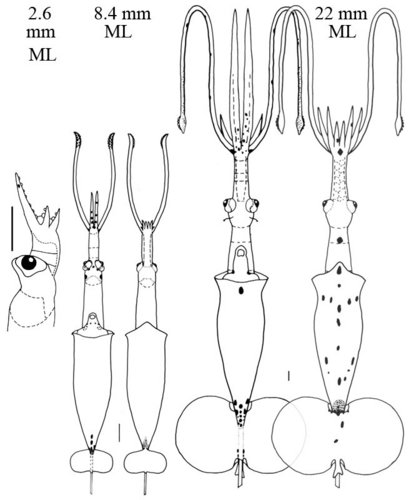
Figure. Paralarvae of Planctoteuthis danae from the waters off Hawaii: Thumbnail - Ventral view of the two paralarvae showing relative sizes. Left - Side view of the head, 2.6 mm ML, showing the ventrally protruding eye, the dorsal position of the esophagus and the small number of chambers in the brachial pillar. Middle - Ventral and dorsal views, 8.4 mm ML. Right - Ventral and dorsal views, 22 mm ML. Scale bars are 1 mm. Drawings from Young, 1991. Note the very elongate arms IV in the 22 mm ML paralarva which is typical of the doratopsis stage in the family. Compare this with the relative arms length of the near-adult female below.
Adults:

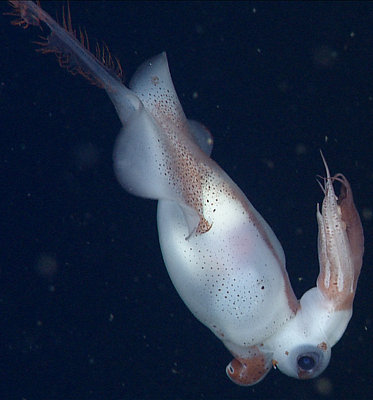
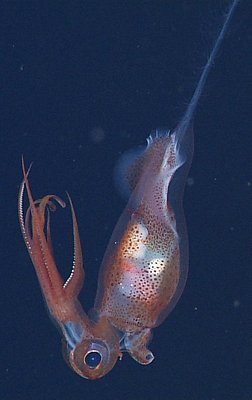
Figure. Side views of P. danae. Left - near-mature female, pictured earlier on this page, at a depth of 1441 m in the Gulf of California. Right - A presumed mature male, judging from the large white structure (probably the spermatophore gland complex) on the ventral side of the viscera, at a depth of 1193 m. This male appears to be slightly larger and more mature than the one captured and seen on the adjoining page. Note that the arms IV are about the same length as arms III in both squid. Both photographs © 2013 MBARI.
Distribution
Vertical
In the eastern North Atlantic paralarvae are found mostly between 200 and 300 m (Clarke and Lu, 1974). Between about 10 and 15 mm ML they are found between 200 and 800 m and at larger sizes they are found at depths greater than 700 m during the day with some captures at depths of over 1000 m. In 1974 P. danae was in the genus Valbyteuthis which contained only two species, P. danae and P. oligobessa Young, 1972, both from the Pacific Ocean. The identification of the species upon which this vertical distribution is based needs confirmation. We know of no other records of P. danae in the Atlantic Ocean. The data could refer to P. lippula or P. levimana.
Figure. Vertical distribution graph based on opening/closing nets with tows at two localities, one at 11°N Lat. and the other at 18°N Lat., North Atlantic. Yellow - Day capture. Blue - Night capture. Bar length - fishing depth of net. Chart modified from Clarke and Lu, 1975 and Lu and Clarke, 1975.
Geographical
The type locality is the Gulf of Panama, tropical eastern Pacific Ocean. It has also been reported from off California and Hawaii (Young, 1972; 1978), off central Chile and the eastern Polynesian Islands (Nesis, 1982), and the eastern North Atlantic -see comments above- (Clarke and Lu, 1975 and Lu and Clarke, 1975).
References
Clarke, M. R. and C. C. Lu. 1975. Verical distribution of cephalopods at 18 N 25 W in the North Atlantic. Journal of the Marine Biological Association of the United Kingdom, 55 (1): 165-182.
Joubin, L. 1931. Notes preliminaires sur les cephalopodes des croiseires du “Dana” (1921-1922). Annales de l’Institut Oceanographique, 10: 169-211.
Lu, C. C. and M. R. Clarke, 1975. Vertical distribution of cephalopods at 11 N 20 W in the North Atlantic. Journal of the Marine Biological Association of the United Kingdom, 55 (2): 369-389.
Nesis, K. N. 1982. Abridged key to the cephalopod mollusks of the world's ocean. 385+ii pp. Light and Food Industry Publishing House, Moscow. (In Russian.). Translated into English by B. S. Levitov, ed. by L. A. Burgess (1987), Cephalopods of the world. T. F. H. Publications, Neptune City, NJ, 351pp.
Roper, C. F. E. and R. E. Young (1967). A review of the Valbyteuthidae and an evaluation of its relationship with the Chiroteuthidae. Proc. U.S. Nat. Mus., 123: 1-9.
Young, R. E. (1991). Chiroteuthid and related paralarvae from Hawaiian waters. Bull. Mar. Sci., 49: 162-185.
Title Illustrations

| Scientific Name | Planctoteuthis danae |
|---|---|
| Location | Gulf of California at 24.18°N,109.63°W, |
| Comments | In situ photograph of P. danae taken at a depth of 1206 m. |
| Acknowledgements | Image courtesy of the Monterey Bay Aquarium Research Institute (MBARI). You must obtain permission from MBARI to use this photo; please contact pressroom@mbari.org for further information |
| Specimen Condition | Live Specimen |
| Identified By | R. E. Young |
| Sex | Male |
| Life Cycle Stage | Just mature |
| View | Side |
| Size | 92 mm ML |
| Copyright | © 2013 MBARI |
About This Page

GEOMAR-Helmholtz Centre for Ocean Research Kiel

Monterey Bay Aquarium Research Institute

University of Hawaii, Honolulu, HI, USA
Page copyright © 2018 , , and
 Page: Tree of Life
Planctoteuthis danae .
Authored by
Henk-Jan Hoving, Stephanie Bush, and Richard E. Young.
The TEXT of this page is licensed under the
Creative Commons Attribution-NonCommercial License - Version 3.0. Note that images and other media
featured on this page are each governed by their own license, and they may or may not be available
for reuse. Click on an image or a media link to access the media data window, which provides the
relevant licensing information. For the general terms and conditions of ToL material reuse and
redistribution, please see the Tree of Life Copyright
Policies.
Page: Tree of Life
Planctoteuthis danae .
Authored by
Henk-Jan Hoving, Stephanie Bush, and Richard E. Young.
The TEXT of this page is licensed under the
Creative Commons Attribution-NonCommercial License - Version 3.0. Note that images and other media
featured on this page are each governed by their own license, and they may or may not be available
for reuse. Click on an image or a media link to access the media data window, which provides the
relevant licensing information. For the general terms and conditions of ToL material reuse and
redistribution, please see the Tree of Life Copyright
Policies.
- Content changed 31 October 2018
Citing this page:
Hoving, Henk-Jan, Stephanie Bush, and Richard E. Young. 2018. Planctoteuthis danae . Version 31 October 2018 (under construction). http://tolweb.org/Planctoteuthis_danae/19492/2018.10.31 in The Tree of Life Web Project, http://tolweb.org/





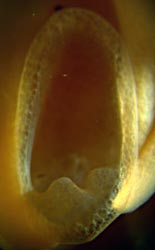




 Go to quick links
Go to quick search
Go to navigation for this section of the ToL site
Go to detailed links for the ToL site
Go to quick links
Go to quick search
Go to navigation for this section of the ToL site
Go to detailed links for the ToL site